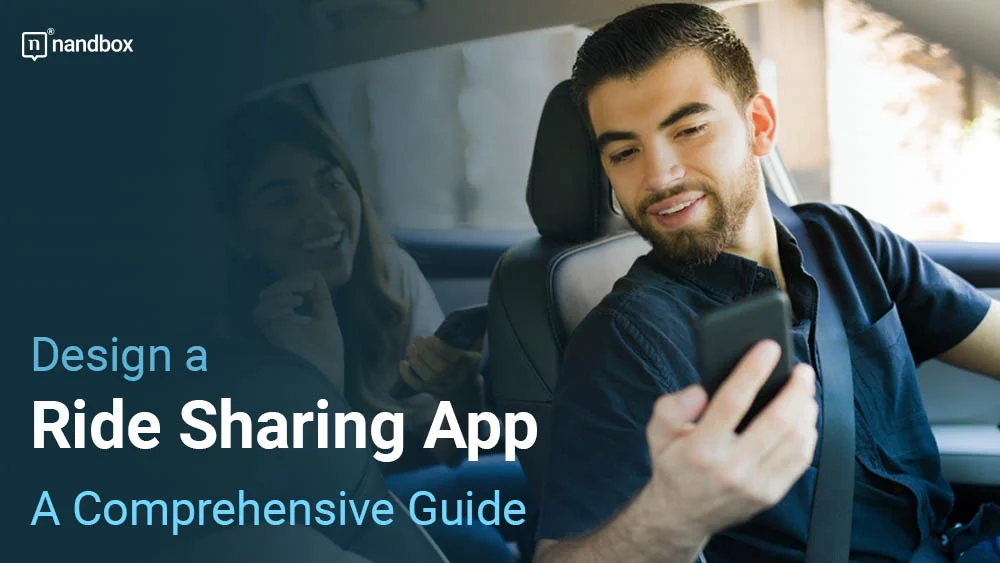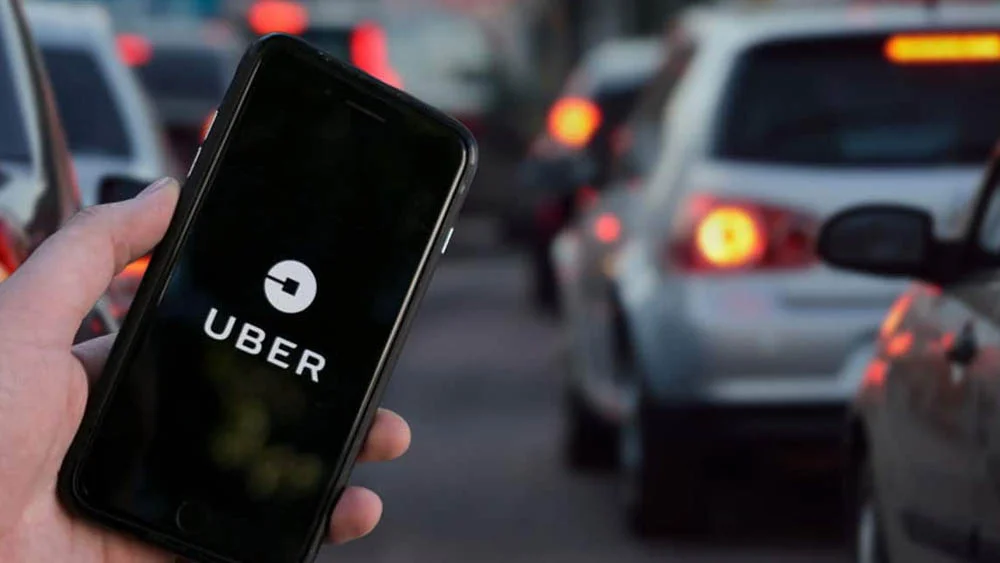Let us start at the beginning. Like the way back when humans only had rocks and fires. In spite of having very limited material, people never stopped traveling from one place to another and going on journeys. Well, compared to them, our journeys now are pretty dull and less adventurous, but we can cope. People now can’t abide by the ways people back in the day traveled. We can’t tolerate walking thousands of miles. We now have more advanced methods like planes, cars, buses, motorbikes, and even bicycles (which is, by the way, a very old method). What is even better now is that we have tools that help us get these means of transportation easily and swiftly. In this article, we will demonstrate the importance of ride-sharing apps and how you can design a ride-sharing application
What Are Ride-Sharing Apps?
Well, some of us don’t like traveling alone for various reasons. Some people feel lonely; some can’t afford the everyday ride fares; and some are environmental enthusiasts. If you are one of these, you probably know what ride-sharing apps are. However, if you don’t, let me explain it to you briefly. Ride-sharing apps are ride-hailing apps, with the same idea, the same functions, and everything. However, one thing that makes ride-sharing apps different is the ability to share rides and journeys with other people. This idea was initiated after many people struggled with the everyday rise of fares. Some people, like myself, need to commute every day for work, where public transportation is not always available. This idea is great for improving communication and saving money. It is also terrific when it comes to saving the environment and reducing greenhouse gases.
Popular Ride-Sharing Apps To Inspire You
Since ride-sharing is a great idea to save money, effort, and, most importantly, the environment. Let us introduce you to the best three ride-sharing apps available on the market to inspire you along your app development journey.
Uber
The first one we need to mention is the pioneer of ride-sharing apps that we all know and love. Uber is considered to be the first commuting and ride-sharing app to ever exist. It started as all great app ideas start. Someone is in a tight position, thinks of an exceptional solution, and eureka! What Uber did was revolutionary and exceptional. In addition to the great private carpooling app that we all know, Uber also established the service of UberPool, which allows riders to share their cars with other passengers. In addition to being eco-friendly, it also helps you save tons of money!
Lyft
Lyft is a carpooling or ride-sharing service that connects riders heading in the same direction with others who need a ride. While this service shares certain similarities with Uber Pool, it also has its own set of advantages. Driver Mode, available on Lyft, lets drivers specify their final destination and choose to pick up only customers heading in the same direction. This can make the trip more productive by minimizing the need for unnecessary stops. Lyft also has a set route option called “Fixed Route”, which allows commuters to set a fixed route for every day. It can be more convenient for commuters if they are picked up and dropped off at specific stops along a defined route.
Via
Via is a ride-sharing app that provides affordable, time-saving commutes and green solutions. Just like the Lyft app and unlike other ridesharing apps, Via uses a fixed route system in which riders are picked up and dropped off at specific stops along a fixed everyday route. Users could easily find another rider going the same way, join the ride, and split the fare. Because of this, time spent in traffic may be cut down, and resources can be used more effectively.
Important Features to Include in Your Ride-sharing App
So, what important features do you think these four successful ride-sharing apps incorporated that helped them become this significant? Well, the following features are the major and key ones you need to consider if you are thinking about designing and developing your own ride-sharing application:
Map Tracking
Well, first comes the most important feature that each and every ride-sharing app definitely needs. We can actually say that map tracking is the core of any ride-sharing app. It allows users to specify their location to be able to request rides. They can also follow the driver as he arrives at the pickup location. Additionally, the map tracking allows the rider and other users that he may share the location with to keep an eye on the whole trip for his own safety, as he can later report it if he notices any abnormal actions. Keep in mind that the GPS services included with map tracking must be accurate to avoid user frustration.
Reviews Section
Reviews are essential, especially when it comes to ride-sharing apps. Including a review section in your ride-sharing app allows users to give an honest and fair review of rides in general and drivers specifically. This will help you later evaluate all the drivers on your app. And in turn, highlight the best ones and exclude the ones with the worst reviews and complaints. This will help build a sense of trust with your users, and you will always present the best experience and service quality.
Push Notifications
Well, if it weren’t for push notifications, we would have missed tons of rides and work days. That is exactly why push notifications are vital and a key feature to include when designing a ride-sharing application. Not only do they alert users of upcoming rides, delays, and cancellations, but they also act as a reminder of any offers and discounts. Push notifications are a great way to keep users coming back to the app and increase user retention rates.
In-App Chat
The presence of two-way communication between drivers and passengers is a must in every ride-sharing app, especially since in this case, there is more than one passenger included. In-app chat is another significant feature, as it provides users with a new way to communicate with drivers other than calling them. Users can then text them their exact address, ask where they are, etc. This feature can also allow communication between passengers sharing the same ride.
Resignation and Personal Profiles
You can’t possibly imagine a ride-sharing app without personal profiles. Through resignations and personal profiles, both passengers and drivers can provide all the necessary information and credentials needed to improve communication, like name, age, nationality, and many more. The personal profile can also include a rating out of 5.
Payment Gateways
Honestly, who doesn’t favor a ride-hailing app just because it has many payment options? Personally, providing more than one payment option is a great indicator that this app might be excellent and worth my time. This is why it is vital to try and incorporate more than one payment gateway, especially with so many emerging nowadays. So, for instance, you can include cash, cards, PayPal, Apple Pay, and many more. This will provide users with great flexibility and make them feel that they are not limited to only one option.
How Much Does It Cost to Develop a Ride-Sharing App?
Well, it was certainly expected that the process of developing and designing a ride-sharing application would be expensive. Bingo, you are totally right; a ride-sharing app might appear as a simple app from the outside. However, there are many complicated and advanced technologies and techniques involved in the development process that people are unaware of.
For instance, the map-tracking feature is much more than a map. The framework and architecture behind this feature are very complex, as it is necessary to make the feature interactive and dynamic, anything but a regular map. This feature usually costs around $3000 and takes approximately 100 hours to integrate.
Another feature that you’d never think costs this much and takes this much effort is the registration and personal profiles. Each and every step and component you add to the registration and personal profile is estimated at a specific price. This makes this feature a total of $2400, with approximately 80 hours to be done.
Can a Good Ride-Sharing App Be Accomplished With No-Code Development
The process of developing and designing a ride-sharing application has proven to be very expensive. Developers and people who are interested in mobile app development went looking for another reasonably priced and affordable alternative that could provide them with the same outcome. Many people turned to the same alternative, which is no-code or low-code development. In addition to being simplified and streamlined, low-code or no-code development is also very affordable.
Another reason why you should consider this is that you don’t need to exert as much effort and time as you would in the traditional development process that involves coding. For instance, in no-code development, all the elements and features are ready-made, and it also depends on a drag-and-drop interface. Thus, all you have to do is drag and drop the feature you need, adjust it to your liking, and you are good to go. Many great no-code platforms like nandbox, Build Fire, and Glide have many great features that are more than enough to develop and design a ride-sharing application at a very affordable price.





